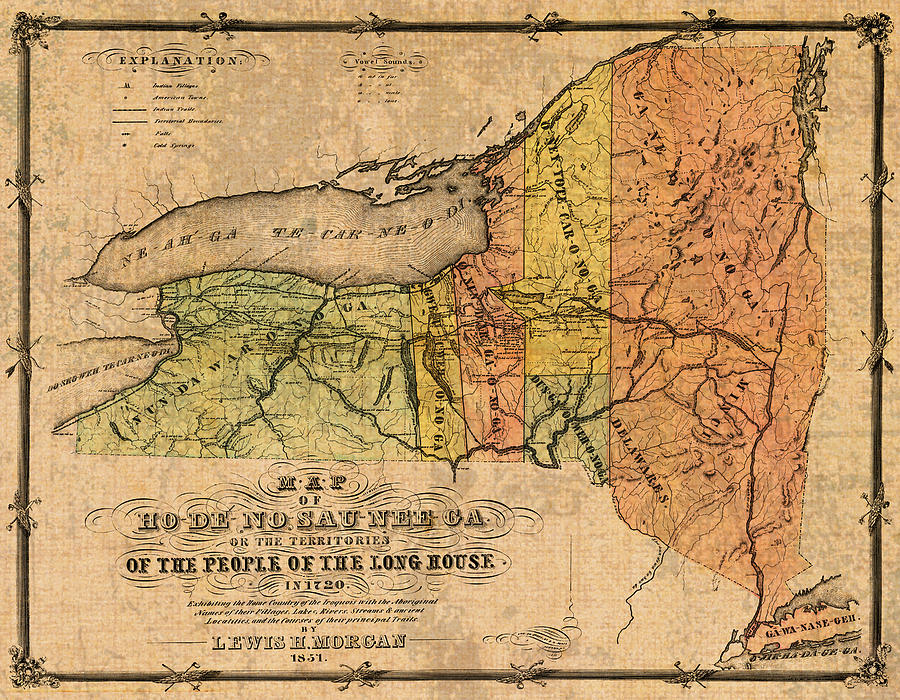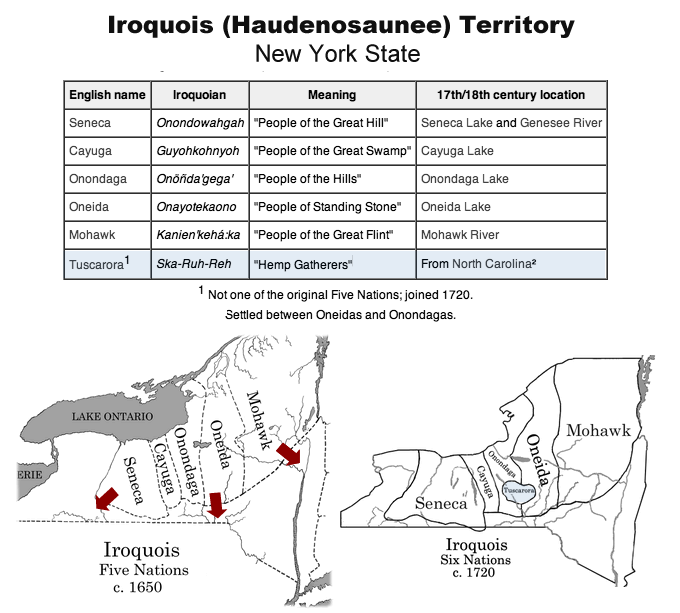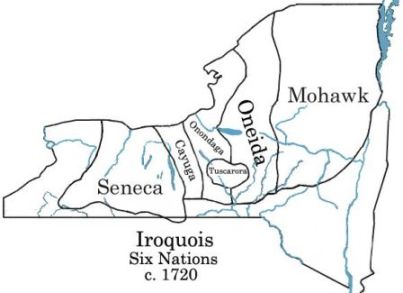Land of the Iroquois: Do Native American Reservations Exist in New York State?
Land of the Iroquois: Do Native American Reservations Exist in New York State?

New York City, the Empire State Building, Broadway, the Statue of Liberty – these are the iconic images that pop into most people’s heads when they think of New York. But did you know that New York State has a rich and fascinating history intertwined with Native American tribes? And while the state is known for its towering skyscrapers and bustling streets, it also holds a significant number of Native American reservations, each with its own unique culture and story.
Let’s dive into the history and present-day reality of Native American reservations in New York State, exploring the diverse tribes who call this land home and the challenges they face in the 21st century.
Related Articles: Land of the Iroquois: Do Native American Reservations Exist in New York State?
- Unveiling the Treasures of Native American Tribes in Arizona: A Journey of Discovery
- Uncover the Enchanting World of New Mexico's Indian Reservations
- Uncover the Hidden Gems: Explore the Enchanting Indian Reservations of Arizona
- Unveiling the Treasures of Florida's Tribal Lands: A Journey through "florida indian tribes map 2023"
- Unveiling the Enchanting Tapestry of Indian Reservations in Yuma, Arizona
A Long and Complex History
Before European colonization, New York State was home to a diverse array of Native American tribes. The most prominent among them were the Iroquois Confederacy, a powerful alliance of six nations: the Mohawk, Oneida, Onondaga, Cayuga, Seneca, and Tuscarora.
The Iroquois Confederacy, known for its sophisticated political system and fierce warriors, held a dominant position in the region. They played a crucial role in shaping the early history of New York, engaging in trade with European powers and influencing the course of colonial conflicts.
However, the arrival of European settlers brought about a dramatic shift in the fate of Native Americans in New York. As the colonists expanded westward, they encroached on tribal lands, leading to conflict and displacement.
The Iroquois Confederacy, despite their initial strength, eventually faced the overwhelming force of the colonial powers. Treaties were signed, often under duress, forcing tribes to cede vast swathes of their ancestral lands.
By the 19th century, the Iroquois Confederacy had lost much of its territory, and many of its members were forced to live on reservations, confined to smaller, less desirable lands.
The Reservations Today
Today, New York State is home to eight federally recognized Native American tribes, each with its own distinct culture and traditions:

- The St. Regis Mohawk Tribe: Located in northern New York, bordering Canada, the St. Regis Mohawk Tribe is the largest of the state’s reservations. They are known for their skilled artisans, particularly in the fields of beadwork and basketry.
- The Oneida Indian Nation: Situated in central New York, the Oneida Nation has a long history of activism and advocacy for tribal rights. They are also known for their successful business ventures, including their casino and a variety of other enterprises.
- The Onondaga Nation: Located near Syracuse, the Onondaga Nation is known for its strong cultural traditions, including its role as the keepers of the Iroquois Confederacy’s sacred fire.
- The Cayuga Nation: The Cayuga Nation has a reservation located in Seneca County, New York. They are known for their strong community ties and their efforts to preserve their traditional language and culture.
- The Seneca Nation: With three reservations in western New York, the Seneca Nation is known for its strong cultural identity and its commitment to self-governance. They are also known for their successful casino operations, which have helped to revitalize their economy.
- The Tuscarora Nation: Located in Niagara County, the Tuscarora Nation is known for its resilience and its strong sense of community. They have a rich cultural heritage, with traditions that include storytelling, dancing, and crafts.
- The Shinnecock Nation: Located on Long Island, the Shinnecock Nation is one of the smallest reservations in New York State. They are known for their deep connection to the land and their efforts to preserve their traditional way of life.
- The Tonawanda Band of Seneca: Located in western New York, the Tonawanda Band of Seneca is known for its commitment to education and its efforts to promote cultural awareness.


Challenges and Opportunities
While New York State has made progress in recognizing the rights of its Native American tribes, they still face a number of challenges, including:
- Economic Disparities: Many reservations in New York State experience high rates of poverty and unemployment. Limited economic opportunities and a lack of access to quality education and healthcare contribute to these disparities.
- Environmental Issues: Some reservations are located in areas with significant environmental challenges, such as contaminated water sources or air pollution. These issues can have a negative impact on the health and well-being of tribal members.
- Land Rights: The issue of land rights continues to be a source of contention for many tribes in New York State. Some tribes have lost significant portions of their ancestral lands through historical treaties and land grabs, and they continue to fight for the return of their rightful territories.
- Sovereignty: The issue of tribal sovereignty is another ongoing challenge. Tribes have the right to govern themselves, but they often face interference from state and federal governments. This can make it difficult for tribes to implement their own laws and policies.
However, despite these challenges, New York State’s Native American tribes are also experiencing a period of growth and renewal. They are actively working to revitalize their cultures, languages, and economies.
Here are some of the positive developments:
- Economic Development: Many tribes are pursuing economic development initiatives, including the establishment of casinos, tourism businesses, and other enterprises. These initiatives are helping to create jobs and improve the quality of life on reservations.
- Cultural Preservation: There is a growing movement among Native American tribes to preserve their cultural heritage. Tribes are investing in language revitalization programs, cultural festivals, and other initiatives to ensure that their traditions are passed on to future generations.
- Political Advocacy: Native American tribes are becoming increasingly active in political advocacy, working to protect their rights and interests. They are engaging with state and federal lawmakers, advocating for policies that support tribal sovereignty and economic development.
The Future of Native American Reservations in New York
The future of Native American reservations in New York State is uncertain, but one thing is clear: these tribes are resilient and determined to maintain their cultures and identities. They are working to overcome the challenges they face and to create a brighter future for their communities.
The state of New York has a responsibility to support the rights and well-being of its Native American tribes. By working together, the state and its Native American communities can create a future where all New Yorkers have the opportunity to thrive.
FAQ:
Q: How many Native American reservations are there in New York State?
A: There are eight federally recognized Native American tribes in New York State, each with its own reservation.
Q: What is the largest Native American reservation in New York State?
A: The St. Regis Mohawk Tribe has the largest reservation in New York State.
Q: What are some of the challenges faced by Native American tribes in New York State?
A: Native American tribes in New York State face challenges such as economic disparities, environmental issues, land rights, and sovereignty.
Q: What are some of the positive developments happening on Native American reservations in New York State?
A: Native American tribes in New York State are experiencing positive developments such as economic development, cultural preservation, and political advocacy.
Q: What role does the state of New York play in supporting Native American tribes?
A: The state of New York has a responsibility to support the rights and well-being of its Native American tribes. This includes working to address the challenges they face and to ensure that they have the opportunity to thrive.
Q: How can I learn more about Native American history and culture in New York State?
A: There are many resources available to learn more about Native American history and culture in New York State. You can visit museums, attend cultural events, read books and articles, and visit Native American reservations.
By understanding the rich history and present-day realities of Native American tribes in New York State, we can foster a more respectful and inclusive society, one that honors the contributions and resilience of these communities.

Closure
Thus, we hope this article has provided valuable insights into Land of the Iroquois: Do Native American Reservations Exist in New York State?. We hope you find this article informative and beneficial. See you in our next article!


